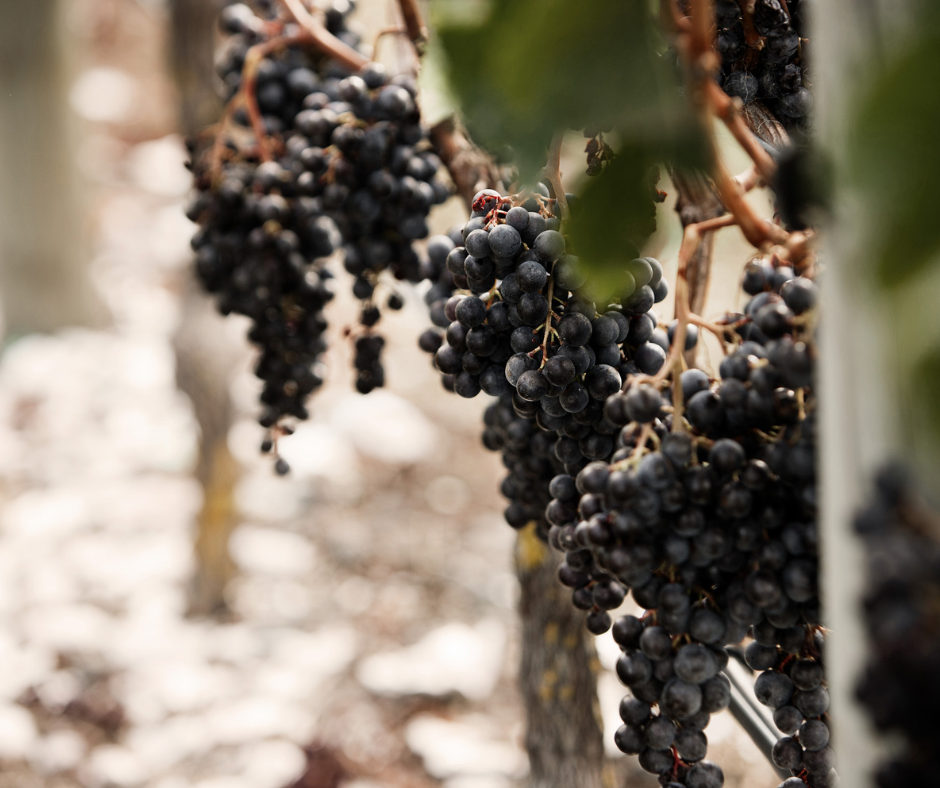
Syrah or Shiraz?
Share
This is a question that has been on our minds for so long that we decided to look into it more deeply. Although we are in the middle of summer in our geographical conditions, many prefer refreshing white and rosé wines on summer days. But July 28 is the day when the world, and especially the wine world, celebrates the International Syrah Day, so the topic is perfectly presented. So let's talk about this variety.
Something about the origin of the Syrah/Shiraz variety
Syrah was born and raised in France. It is a dark grape variety grown all over the world and used mainly to make red wine. The variety was created by crossing the old southern French Dureza variety with the Mondeuse Blanche variety from the Savoie region in the French Alps. Syrah is one of the most important grape varieties in the Rhone Valley region of France. In the northern part of the Rhône, it is the only red variety that is allowed to make wine from appellations located in the Rhône region.
Legends about the origin of the Syrah variety are based on another widely used designation - Shiraz. Since the famous Shirazi wine was produced in Shiraz, the capital of the then Persian Empire (now Iran), legends say that Syrah originated in Shiraz and was then brought to the Rhone region. Two vastly different versions of this rumor are given, giving different accounts of how the variety came to France. According to one version, the Phoenicians may have brought the Syrah/Shiraz variety to their colony around Marseille (then known as Massilia), which was founded by the Greeks around 600 BC. nl But no evidence has survived, and the variety later disappeared from the Marseille area.

Where in the world it is grown the most
France has the most Syrah vineyards in the world. As we outlined in the previous paragraph, Syrah is grown throughout the Rhone Valley. The wines produced here vary greatly. Differences in soil quality as well as changes in terrain tend to produce different styles of wine.
Syrah is also a key varietal in many blends. It can be used to complement the structure and color of Grenache in Southern Rhône blends, including Côtes-du-Rhône and Châteauneuf-du-Pape. Syrah is also the only red variety used in Northern Rhône wines. In 1968, there were only 2,700 hectares of Syrah vineyards in France, mainly in the traditional appellations of the northern Rhône. Wines from the northern Rhône were "rediscovered" in the 1970s and plantings therefore expanded significantly. In 1988, the total number of French vineyards was 27,000 hectares, and in 1999 there were already 50,700 hectares of vineyards with the Syrah variety.
Australia is the second largest producer of Syrah, accounting for approximately 40% of the country's total wine production. Syrah is almost always called Shiraz among its peers (except in New Zealand) and produces some of Australia's best-known and most expensive wines such as Penfold's Grange Bin 95 and Henschke Hill of Grace.
In Spain, Syrah plantings are also very important, but the wines are almost always blended with other varieties and the name Syrah rarely appears on the labels.
New Zealand recently joined the club of Syrah producing countries. You can taste Syrah 2018 from the Craggy Range winery from our offer on the e-shop . Over the past decade, the planting of this variety has doubled to 430 hectares. New Zealand winemakers almost always use the term Syrah to emphasize New Zealand's cool climate and the peppery, mineral style of the wines produced.
The entire "New World" has been lured by this rich and spicy variety, with varietal wines being produced in significant quantities in South Africa, the United States and Chile. There, the name Syrah or Shiraz is often used to denote the style of wine.
So let's sum it up - "Syrah" refers to a wine made generally in cooler climates in a more moderate style, while "Shiraz" is reserved for the fuller, higher alcohol content and exuberant expressions of this variety.
Characteristics and flavor profile
The style and flavor profile of wines made from Syrah is influenced by the climate where the grapes are grown. Temperate climates (such as the northern Rhone Valley and parts of Washington State's Walla Walla AVA) tend to produce medium-bodied to full-bodied wines with medium to high tannins and notes of blackberry, mint, and black pepper. In hot climates (such as Crete and the Barossa Valley and McLaren Vale regions of Australia), Syrah is fuller, with softer tannins, more jammy fruit and spicy notes of licorice, anise and earthy leather. In many areas, the acidity and tannin content have a favorable potential for the aging (archiving) of the produced wines.
The variety has a long history here, dating back to the mid-1800s, and today nearly 90% of plantings are in Hawke's Bay and Auckland/Northland.
New Zealand Syrah is characterized by a bright, spicy taste and an elegant structure, you will immediately appreciate the intense varietal difference, similar to the elegant style in the wines of the northern Rhone, full of plums and spicy black pepper and sometimes with a touch of violets.
Few red wines can perfectly complement the distinct flavor of roast duck like the fruity, clean and beautifully fragrant New Zealand Syrah. It also goes well with grilled meats and beef served with sauce or with tomato dishes, pizza or Bolognese sauce.
Source: decanter.com, nzwines.com, vivino.com

